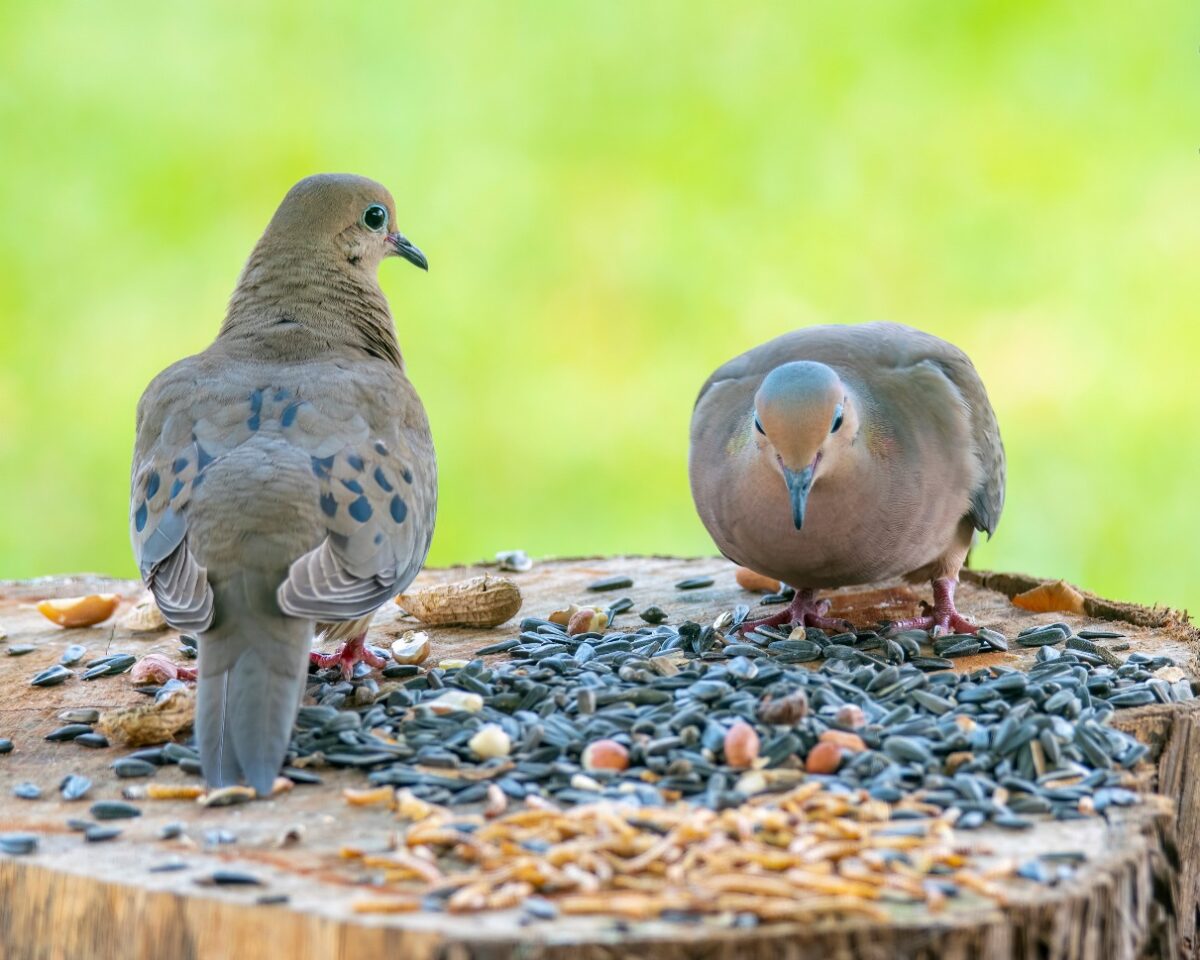Mourning doves are small, plump, grayish-brown birds with long, pointed tails in the Columbidae family. They are closely related to pigeons and are the most common dove in North America, where they are a popular game bird throughout their range.
These birds live in open woodlands but feed in grasslands, agricultural fields, backyards, and on the shoulders of roads. People easily recognize their gentle, cooing call, and are often one of the first birds to sing in the morning.
Mourning doves are mostly granivorous and primarily eat seeds, although they sometimes eat grasses, berries, herbs, and the occasional snail or insect. Breeding females sometimes eat insects or snails when they are raising their young.

What Do Mourning Doves Eat During Winter?
Mourning doves live in many climates, but those in the north migrate south during the fall and return to their breeding grounds in the spring. During the winter months, the migrant birds and the resident birds in the southern parts of their range eat whatever foods are available.
They eat many seeds from backyard birdfeeders, including millet, cracked corn, and black oil sunflower seeds. In other places, mourning doves forage for food in agricultural fields, eating the seeds they find after farmers harvest their crops.
Mourning doves are highly adaptable to human habitats and can usually find food, no matter which habitat they are searching. People who want to feed doves in the winter can spread seeds on the ground or provide a feeder that gives them a ledge to access food.
What Do Mourning Doves Eat During Summer?
During the spring and summer in North America, birds can usually find plenty of forage available. They feed almost exclusively on the ground in open areas with short vegetation, such as fields, gardens, parks, and roadsides.
Throughout the summer, these open areas produce grasses, weeds, seeds, and berries that mourning doves eat. Many backyard bird enthusiasts continue to provide sunflower seeds, cracked corn, millet, and safflower to the mourning doves that visit their feeders.
Mourning doves almost exclusively eat grains throughout the year. However, because they produce two to five clutches of young in the spring and summer, the breeding birds must also eat protein from insects, spiders, and snails, in addition to the grains they forage.
What Do Baby Mourning Doves Eat?
Mourning doves are monogamous and build nests each year in trees or shrubs. Baby mourning doves, usually called squabs, hatch out after about twelve days and fledge after around fifteen days.
When baby mourning doves hatch, their parents take turns feeding them crop milk which is high in protein. The squabs exclusively eat crop milk as nestlings and continue eating it for up to two weeks after fledging.
What Should You Feed Mourning Doves in My Birdfeeder?
Backyard birders can attract mourning doves to their birdfeeders by providing them with a birdfeeder that has space for them to perch. Homeowners can also spread seeds on the ground where these ground-foraging birds can more easily eat.
Of all the birdseed mixes, mourning doves prefer the varieties containing millet, cracked corn, black oil sunflower seeds, safflower seeds, and peanut hearts. They may also eat berries, fruits, and vegetables when available.
What Should You Avoid Feeding Mourning Doves?
Mourning doves prefer eating grains but sometimes encounter unhealthy or even toxic foods. Backyard birders should avoid feeding their feathered visitors foods that can make them sick and clean their feeders regularly.
People should not feed mourning doves bread or crackers. These food items can expand in their gut, filling them up and preventing them from eating the grains and insects they should eat for good health.
Several foods are also toxic to mourning doves, including junk food, such as chips and pretzels, chocolate, coffee, tea, onions, walnuts, and alcohol. These foods can make mourning doves sick or even lead to their death.
